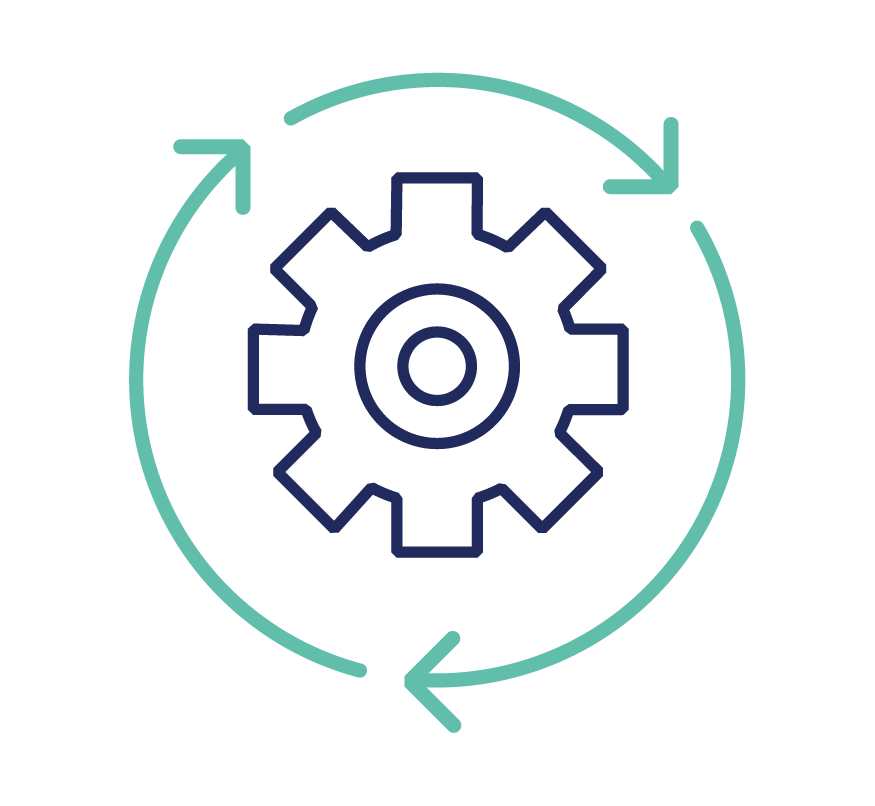
School Performance Assessments & Operational Audits
On a very basic level, the audit process that we have designed aims to enhance the performance of each school and ensure that their teachers and staff are equipped with the necessary knowledge and tools to meet students’ needs. The focus of our model is to develop a thorough understanding of the school’s operations, which allows to identify their strengths, weaknesses, and any areas that have room for improvement. Once we have obtained our results, we can help each respective school improve their operating model and enhance their overall performance by handing over a tailor-made report that discusses all this information in detail. Tasharuk can also assist them with the implementation of any necessary changes if required.
It should also be noted that the size of the audit team is based on the specific circumstances of each respective school and the number of teachers/staff/students involved.
The Process
Our lead auditors initiate the auditing process by requesting that the school conduct a self-audit using a standard version of our model, following a thorough orientation session with various stakeholder groups. Then, at least 50% of the school's stakeholders will initially conduct the assessment online. This comprises teachers, students, parents, and management. Each stakeholder group will be assigned auditing capabilities that correspond to their knowledge and areas of expertise. As this model is evidence-based, two lead auditors will then visit the school to verify the information and speak with various stakeholders before generating & submitting the audit report.
Auditors will …
Arrive at fair and accurate judgements that are securely based on evidence, in line with our audit framework
Make their evaluations impartially, free of personal bias or prejudice
Treat those they meet during the Audit process with courtesy and respect, keeping the interests of students at the heart of every audit
Establish effective working relationships with the school staff
Respect the confidentiality of information; however, to report any safeguarding concerns directly to the school top management
Plan and manage the audit process effectively to ensure it is as smooth and straightforward as possible
Take into account policies, documentation and self-evaluation undertaken by the school and, explore issues through professional dialogue with school staff
Observe students’ learning experiences directly; scrutinies work; engage in discussions with students, staff and governors
School Self-evaluation
Accurate self-evaluation is a key element of school improvement. Self-evaluation should not take place just because an Audit is imminent. It is a process that all schools need to engage in regularly in order to highlight strengths and weaknesses and to provide accurate information for school improvement planning. At the heart of school self-evaluation are three questions for stakeholders to ask themselves:
How are we doing?
How well should we be doing?
What will we do to improve?
Audit Evidence
Auditors will make evaluations on the basis of the evidence they gather from:
Documentation
Stakeholders questionnaires
Discussions with staff, students, parents and governors
Observation of lessons and general observations around the school
Scrutiny of students’ work
Framework of performance standards and indicators
This set of performance standards and indicators has been developed following extensive consultation. It draws upon frameworks used around the world.
Performance standards and indicators are at the heart of the most effective audit systems worldwide. They provide a framework within which auditors make judgements on the basis of evidence of observed practice
Detailed rubrics are provided for each audit parameter to assist participants in making the proper judgement
Standards and indicators create a vocabulary for a conversation with schools about the key purposes of education and the key factors of educational quality
The use of a common set of standards and indicators supports consistency in judgements
The rubrics for the highest performance levels provide a description of educational excellence to which schools can aspire
The rubrics for the lowest performance levels provide schools with a clear understanding of what needs to be improved
Schools can use the standards and indicators for self-evaluation and school improvement planning
Audit Areas
Our audit model is structured around the following nine areas:
Wellbeing and Safety
Curriculum Design
Teachers’ Effectiveness
Students Performance
Leadership Effectiveness
School Governance
Teachers’ Development and Retention
Succession Planning
Stakeholders Engagement
Impact on schools
Improving student/teacher performance and morale
Creating stronger stakeholder engagement
Embracing an international mindset
Retaining teaching talents
International accreditation and certification (if required)
Identifying risk factors and establishing mitigation actions
Establishing a performance – based compensation culture
Adopting highly effective teaching and learning approaches and techniques
Standardizing educational practices
Ensuring business viability and sustainability



